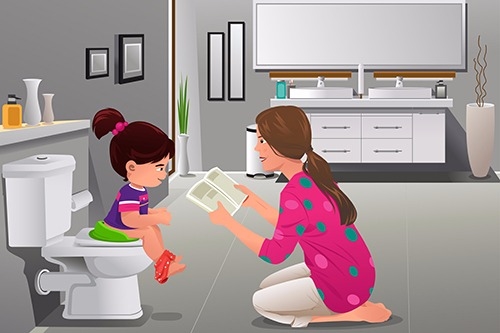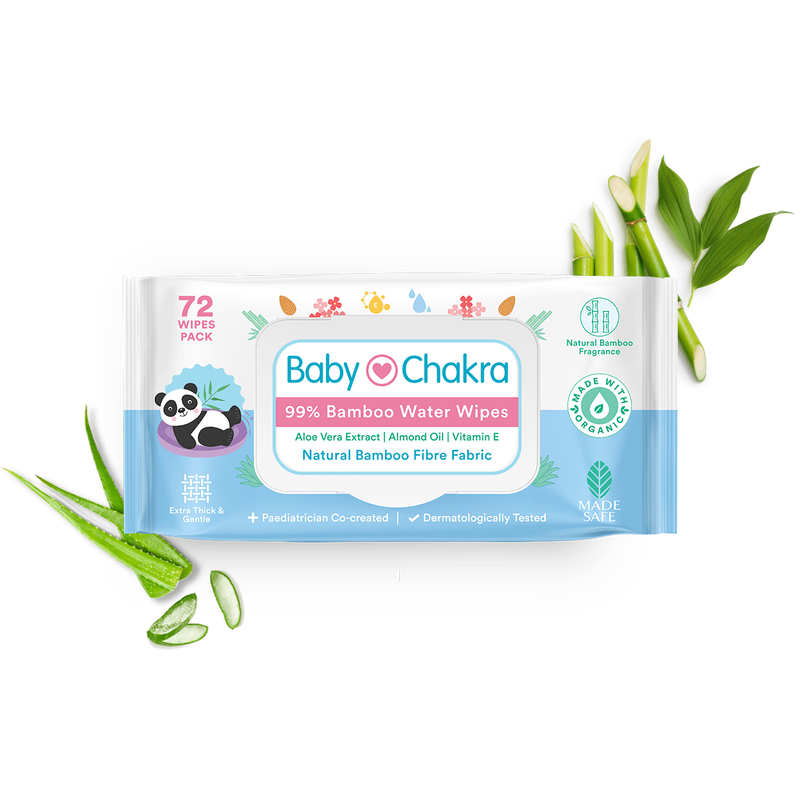
4 Tried And Tested Tips For Potty Training Your Child
10 Jul 2016 | 5 min Read
Baby Chakra
Author | 501 Articles
Potty training your child might seem daunting, but if you follow a few simple tips, there’s nothing to worry about. However, the potty training process can get messy, so organic bamboo wipes made with natural ingredients and safe to use are a saviour for those messy times. Always remember to #LabelPadhoMoms when you are buying skin care products for your baby.
One of the biggest questions is when to start potty training your toddler. The answer differs for every child. Read on for some tips and suggestions.
When Do You Start Potty Training?
The best potty training age varies for any child and hence it isn’t one size fits all. Sometimes this can happen at 18 months and sometimes it doesn’t happen until your child is close to age 4. Most children generally start potty training between 18 and 30 months.
Some signs that indicate that your child is ready to start potty training include:
- Your child is dry for two hours minimum at a time during the day and is dry after naps.
- They can follow multiple instructions. This includes a request to walk to sit down, go to the bathroom and remove their clothes.
- They’re interested in wearing underwear made for big kids.
- Your child gets to know when their diaper is wet, and starts crying, or shows any other form of discomfort when it is soiled.
- They show through facial expressions, posture, or language that they want to use the toilet.
Even if your child seems ready, experts say to avoid potty training during transitional or stressful times. For instance, if you’re moving to a new place, taking a vacation, going through a divorce, adding a new baby to the family or starting a new childcare situation, you should postpone the potty training until about a month after the transition.
Children will learn this new skill best if they’re relaxed and are on a routine. When you are in doubt, ask a paediatrician about the best time to potty train your child.

Potty Training Tips
Once you understand when to start potty training, you must introduce it properly. Here are some tips to help ease the transition from diapers to toilets.
1. Introduce The Toilet Slowly
Start talking about potty training sometimes around your child’s first birthday to develop interest. One way to do that is to read a few children’s books about potty training with your child. You can do that by reading them a book that is about potty training.
2. Offer Rewards
When you’re potty training, accidents are likely to happen. Some kids still have accidents when they are of age 5 or 6, and many don’t stay dry at night until that age. In some children, the age can even extend. Hence, never punish your child for wetting or soiling their pants. Understand that they’re just learning and can’t help it. Instead, when your child uses the potty successfully, offer gentle praise or encouragement or maybe even a small reward.
3. Follow A Schedule
Try having your child sit on the potty every couple of hours, whether they need to go or not. To sit your child on the toilet, go for times like first thing in the morning, before you leave the house, and before naps and bedtime.
Tell your little one to remove shorts or pants first, their underwear or diaper next. Then ask him/her to sit on the toilet for a few minutes. It can be more time-consuming if you think they have to poop. You can then, read a book or play a game, or even ask a few questions, to make the time pass in a fun way.

4. Educate About Proper Hygiene
It’s important to teach children about good hygiene habits that will last a lifetime. Washing hands should be a part of their routine from day one. After any time on the potty, ensure that your child learns to wipe, flush, and wash their hands, even if they went in the potty or not.
According to the Centers for Disease Control and Prevention (CDC), one should wet hands with cool or warm running water and then lather up with soap. After that, you should scrub your hands for at least 20 seconds. Make hand-washing even more fun by buying colourful kid-friendly soaps or liquid handwash. You can make the handwashing process last long enough by singing a favourite song.
Potty training takes time and effort
You will most likely prefer to get potty training over with as soon as possible and maybe you want to learn about the 3-day potty training trend. However, remember not to get too frustrated if it doesn’t work with your child.
Also, at times a child who has been successfully using the potty for a few days may say that they want to return to diapers. You might agree to this for a short period if your child starts withholding bowel movements as this can lead to constipation.
Try to build in a plan to resume your child’s potty training by asking what are they comfortable with and keep switching between diapers and underwear to help ease the transition.
Cover image credit – Zero to three
A


Suggestions offered by doctors on BabyChakra are of advisory nature i.e., for educational and informational purposes only. Content posted on, created for, or compiled by BabyChakra is not intended or designed to replace your doctor's independent judgment about any symptom, condition, or the appropriateness or risks of a procedure or treatment for a given person.

